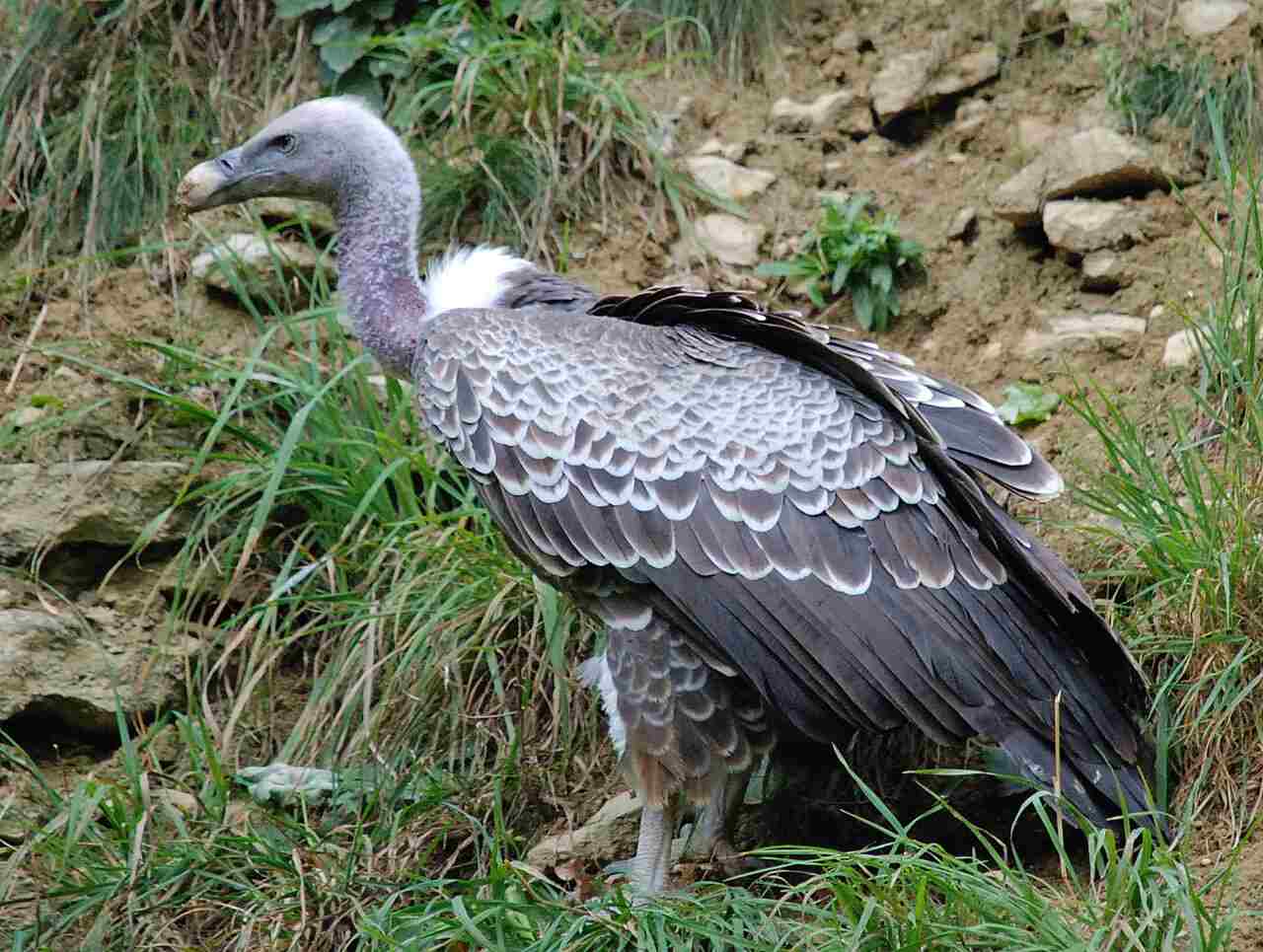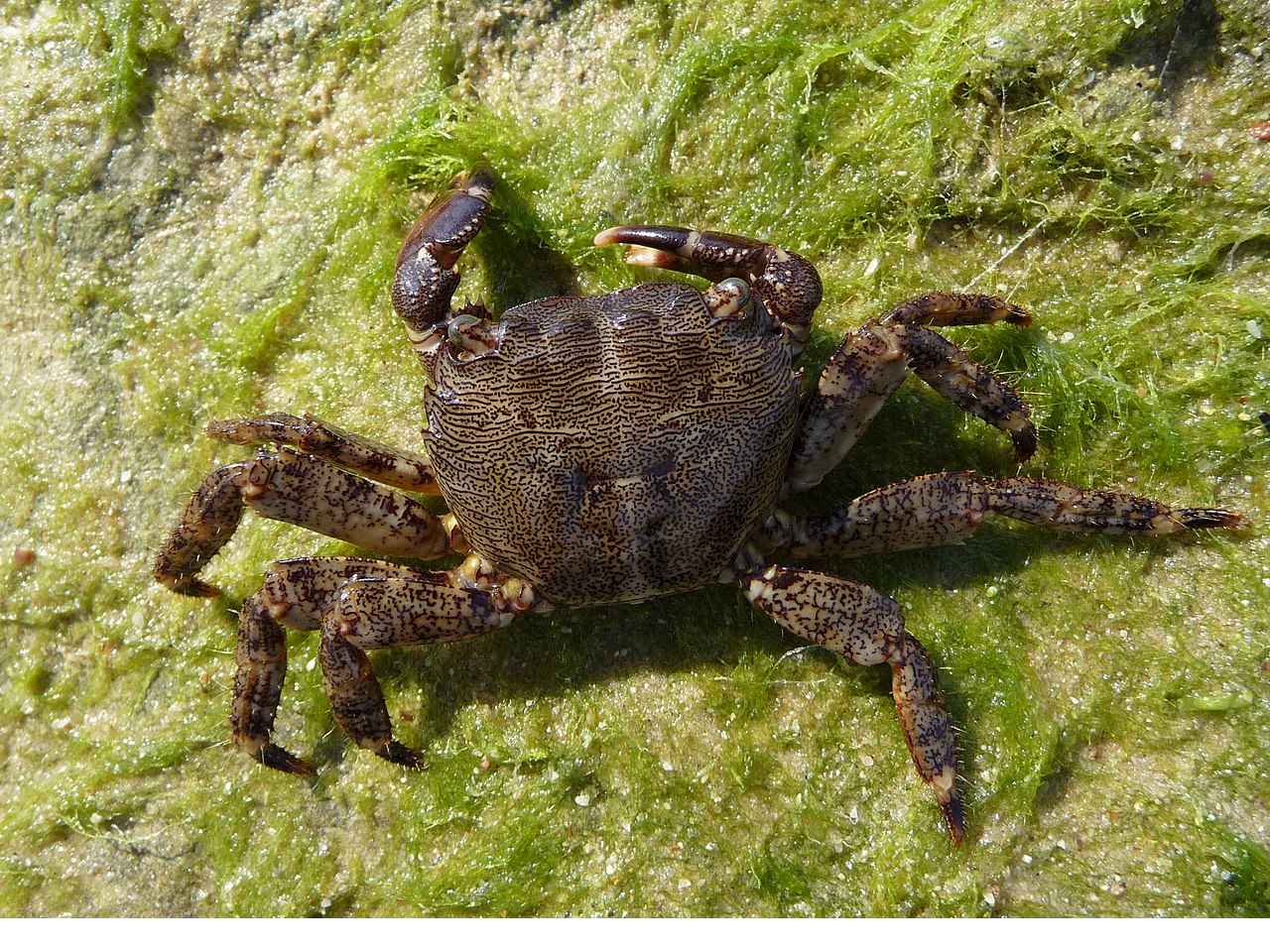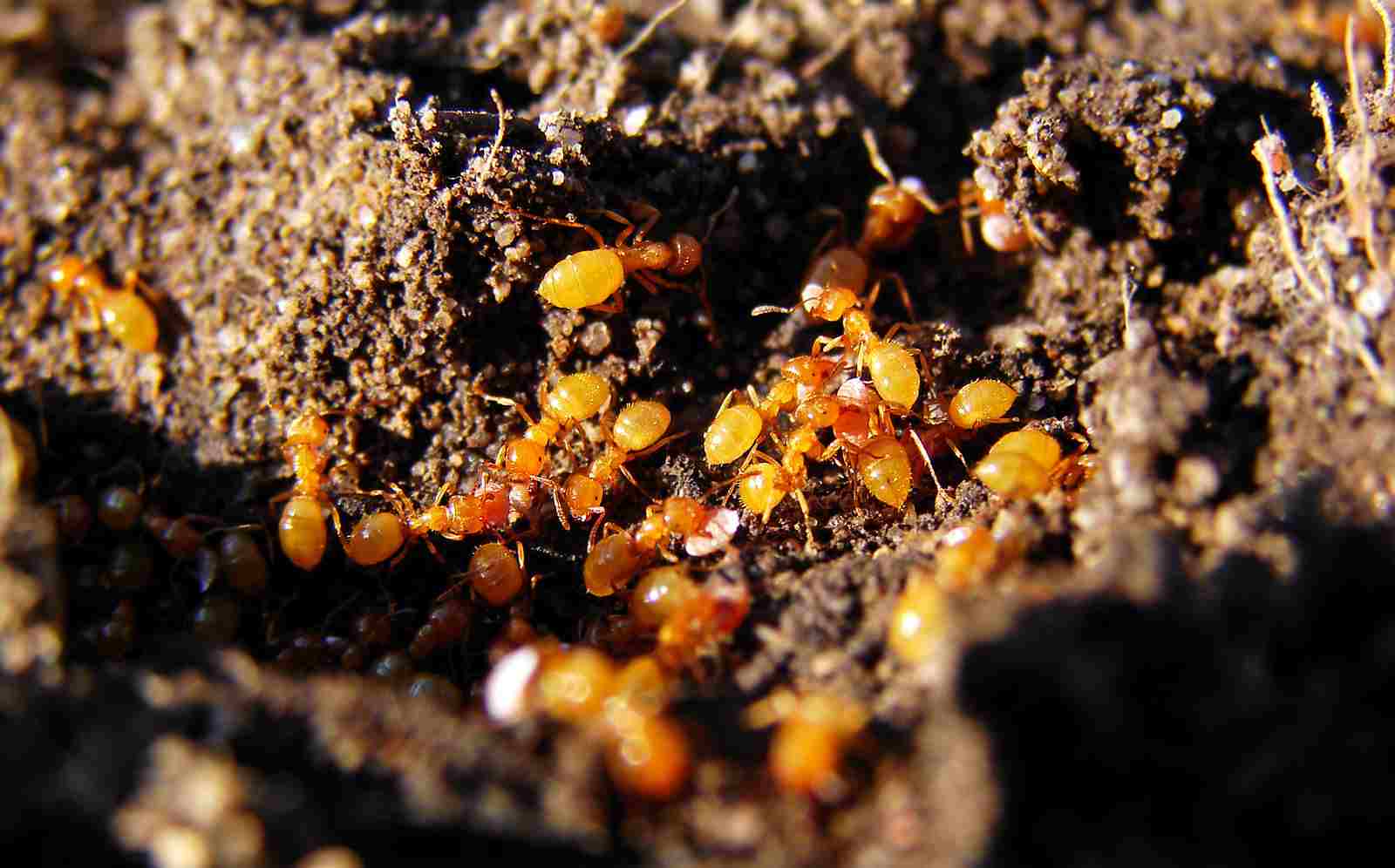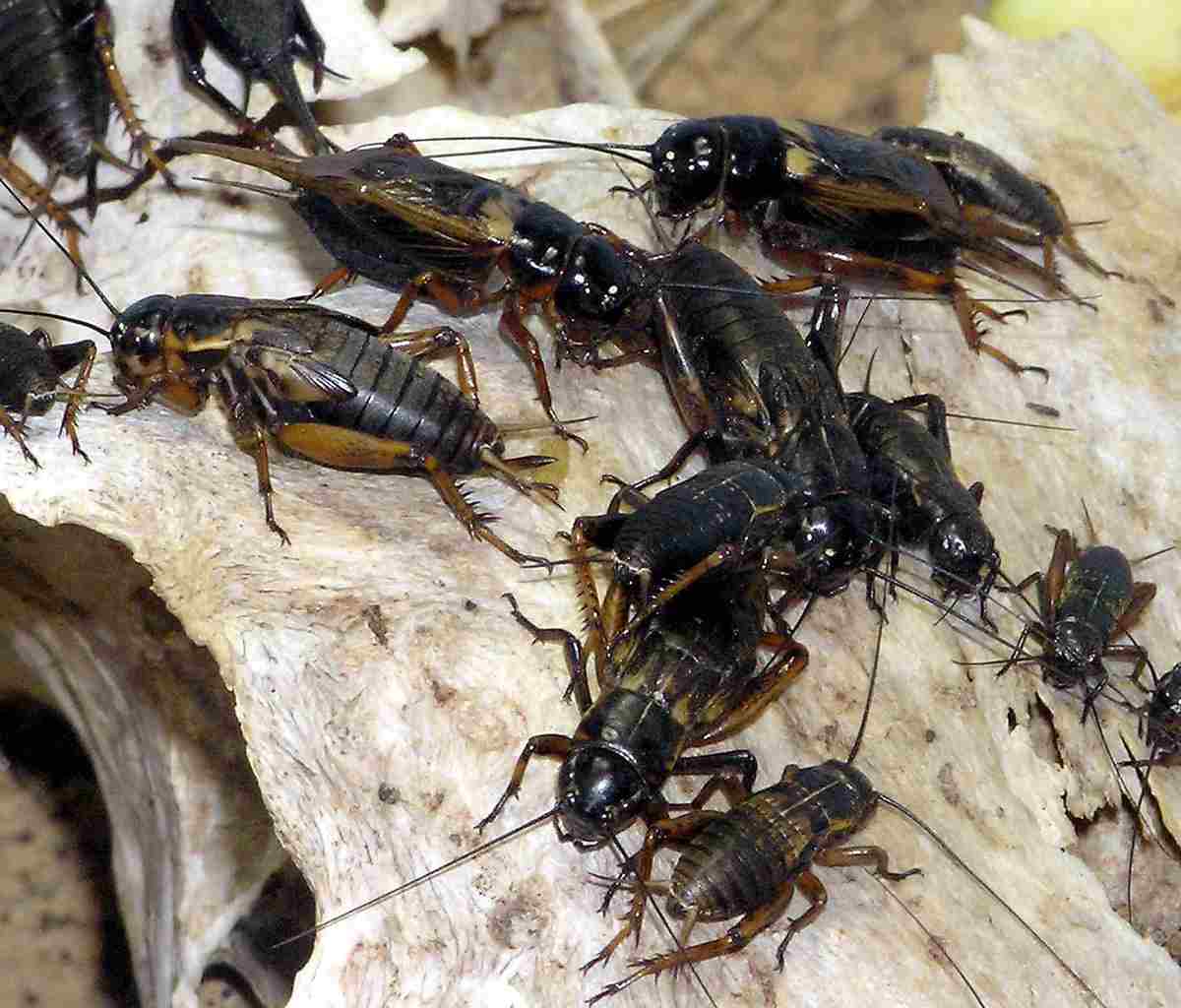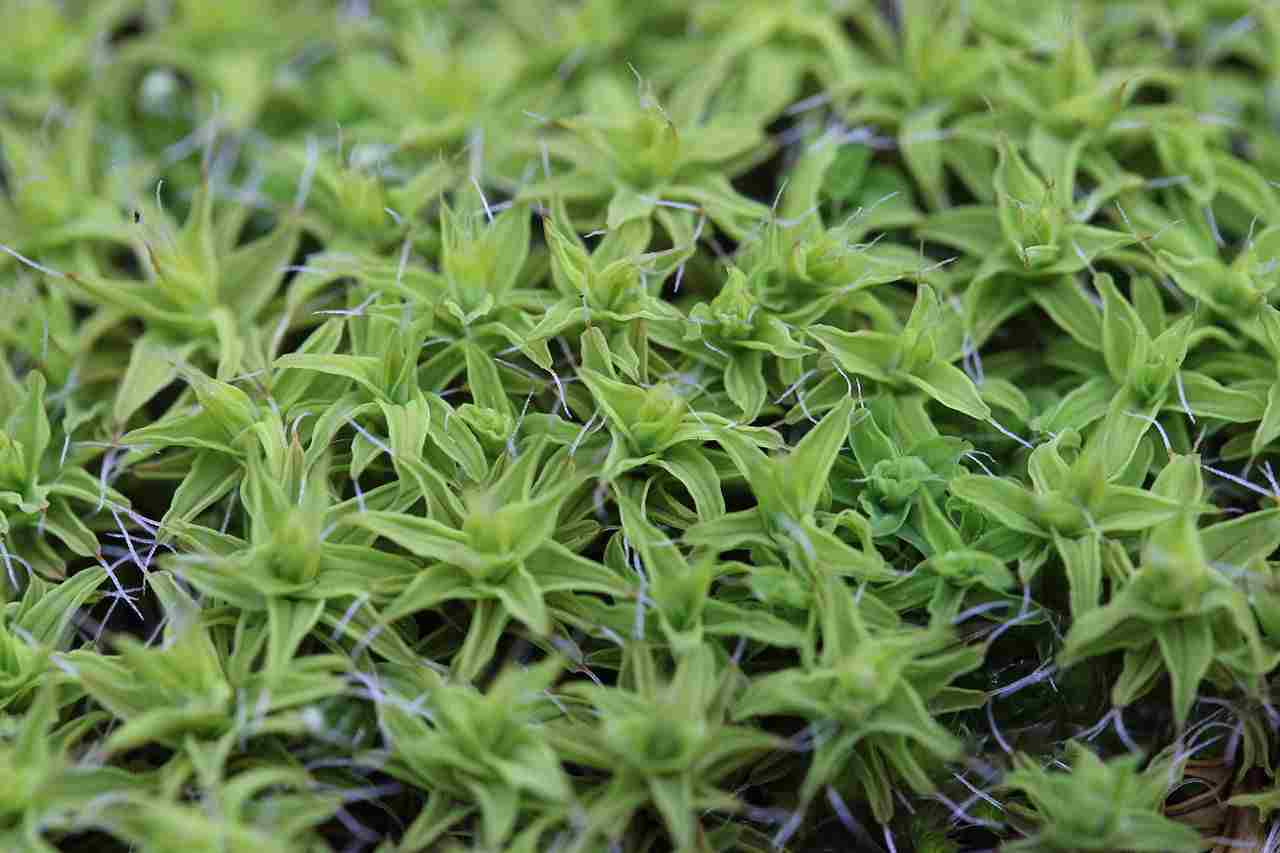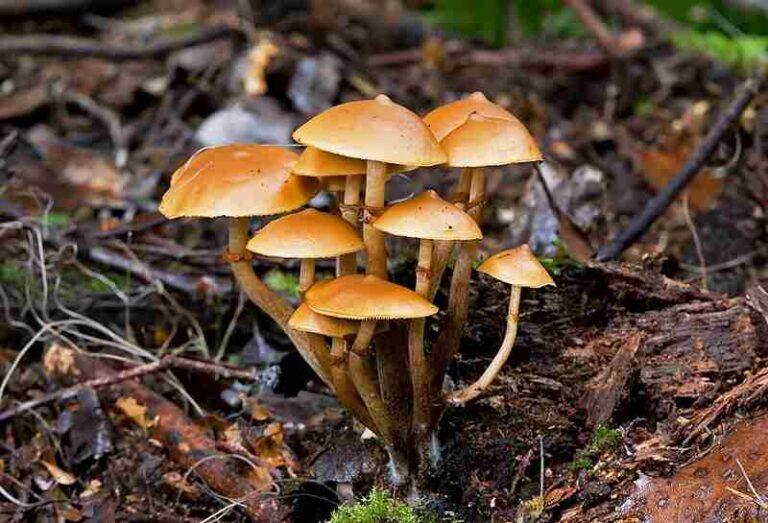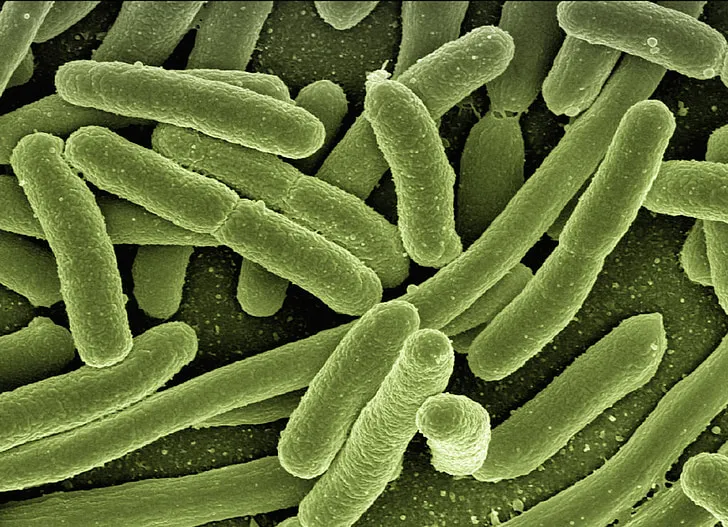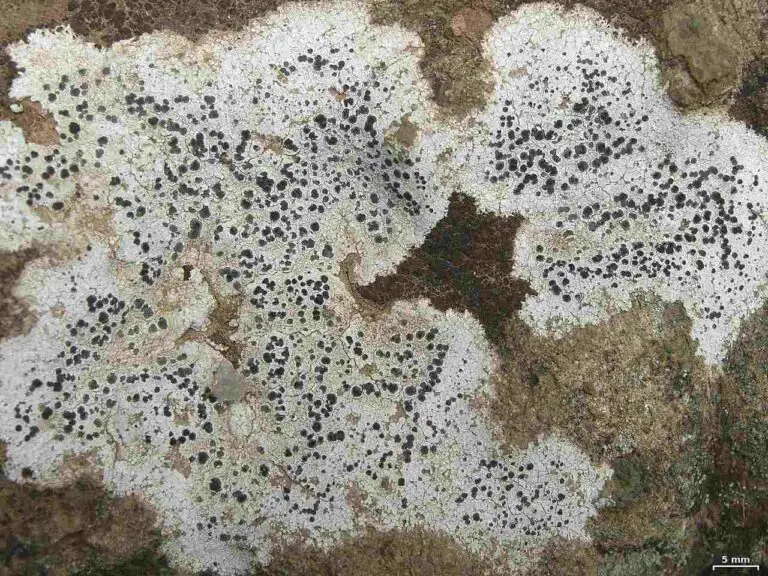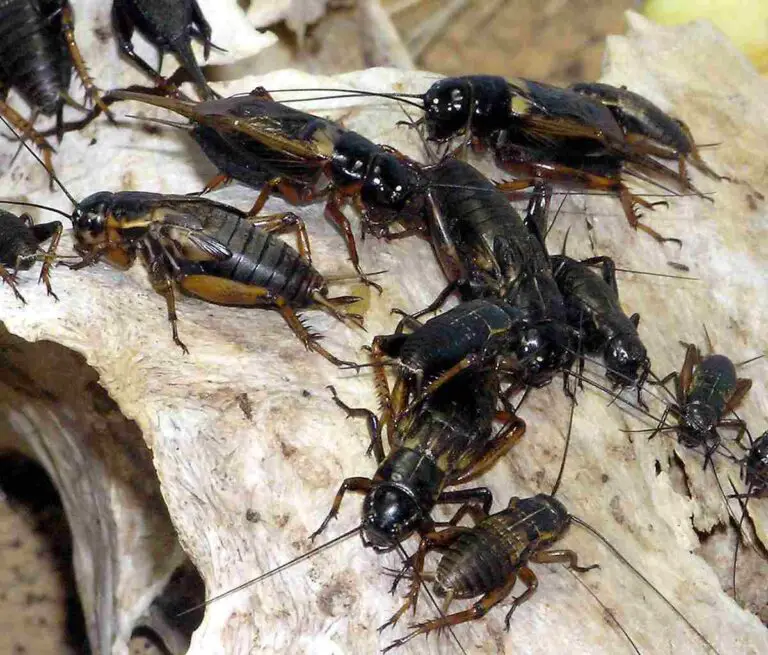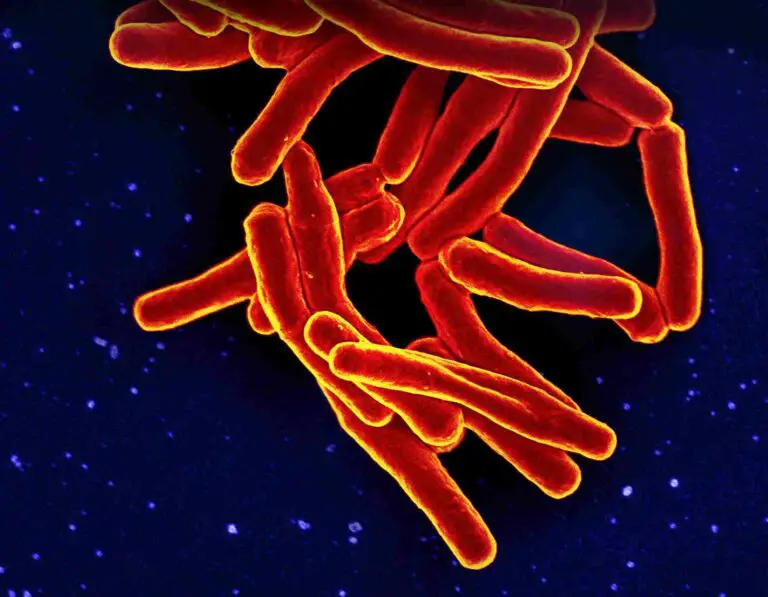Are Snails Decomposers? Analyzing the Detritivorous Behavior of Snails
Snails are decomposers in the ecosystem or food chain because they are detritivorous and contribute to the process of biodegradation and recycling of important biotic and abiotic resources like biomass and nutrients.
Reasons Why Snails are Classified as Decomposers
1. Consumption of Detritus
One of the main reasons why snails are classified as decomposers is their consumption of detritus. Detritus refers to dead organic matter, such as fallen leaves, decaying plants, and animal remains. Snails play a crucial role in breaking down this detritus and recycling nutrients back into the ecosystem.
Snails have a voracious appetite for detritus, which they consume as part of their diet. They use their radula, a specialized feeding organ, to scrape and ingest decaying plant matter. This process helps to break down the detritus into smaller particles, making it easier for decomposers like bacteria and fungi to further break it down.
By consuming detritus, snails contribute to the process of biodegradation. Biodegradation is the natural process by which organic matter is broken down and recycled by living organisms. Snails aid in this process by consuming detritus and excreting waste that is rich in nutrients. This waste, known as snail feces or snail castings, contains valuable organic matter that can be further decomposed by other organisms, releasing nutrients back into the soil.
The consumption of detritus by snails is particularly important in forest ecosystems. Fallen leaves and other plant debris accumulate on the forest floor, and snails play a vital role in breaking down this organic matter. By consuming detritus, snails help to accelerate the decomposition process, releasing nutrients that can be taken up by plants and other organisms.
In addition to their role in biodegradation, snails also provide a valuable service by helping to maintain the cleanliness of their environment. By consuming decaying plant matter and animal remains, snails help to prevent the accumulation of organic debris, which can lead to the growth of harmful bacteria and fungi.
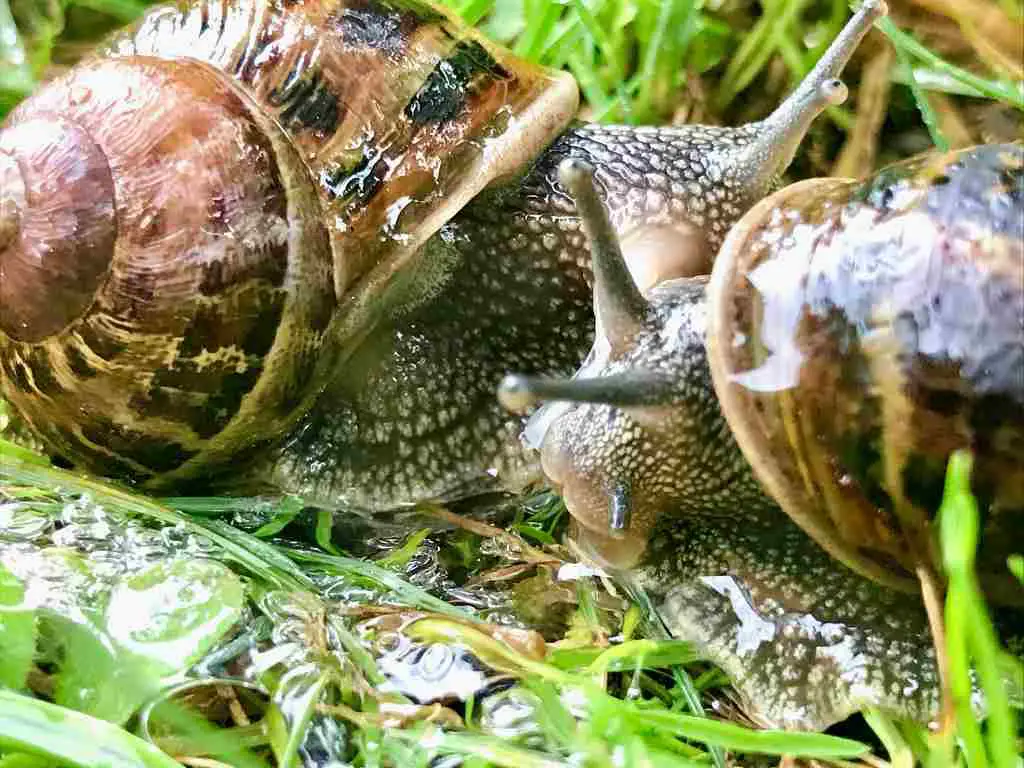
2. Role in Biodegradation
Snails play a crucial role in the process of biodegradation, which is one of the reasons why they are classified as decomposers. Biodegradation refers to the natural breakdown of organic matter by living organisms. Snails contribute to this process by helping to break down plant remains and other organic materials.
One of the main ways snails aid in biodegradation is through their consumption of plant remains. Fallen leaves, decaying plants, and other organic debris accumulate on the forest floor, and snails play a vital role in breaking down this material. They use their radula, a specialized feeding organ, to scrape and ingest decaying plant matter. This helps to break down the plant remains into smaller particles, making it easier for other decomposers like bacteria and fungi to further break it down.
In addition to plant remains, snails can also help break down non-plant organic matter. While their primary diet consists of plant material, snails may consume other organic debris such as animal remains or dead insects. By consuming these non-plant remains, snails contribute to the overall process of biodegradation, helping to recycle nutrients back into the ecosystem.
The role of snails in biodegradation is particularly important in maintaining the health and balance of forest ecosystems. By breaking down plant remains and other organic matter, snails help to accelerate the decomposition process. This releases nutrients that can be taken up by plants and other organisms, supporting the overall productivity of the ecosystem.
Generally, the role of snails in biodegradation highlights their importance as decomposers in the natural world. Through their consumption of plant remains and other organic materials, snails contribute to the recycling of nutrients and the maintenance of ecosystem health.
Is a Snail a Producer?
No, a snail is not a producer. This is because snails are not autotrophic and do not manufacture their own food through any form of biochemical synthesis. Unlike plants and some bacteria, snails cannot convert sunlight or inorganic substances into organic matter through photosynthesis or chemosynthesis.
Producers, also known as autotrophs, are organisms that can produce their own food using energy from the environment. They are capable of synthesizing organic compounds from simple inorganic substances such as carbon dioxide and water. This ability allows them to sustain themselves and provide energy for other organisms in the food chain.
Snails, on the other hand, are heterotrophic organisms. They rely on external sources for their nutrition and cannot produce their own food. Snails obtain their energy by consuming organic matter, such as plants, algae, and decaying material. They are classified as detritivores, which means they feed on dead organic material and contribute to the process of decomposition.
Detritivores play a crucial role in ecosystems by breaking down organic matter and recycling nutrients back into the environment. Snails contribute to this process by consuming plant remains and other organic debris. They use their radula, a specialized feeding organ, to scrape and ingest decaying plant matter. This helps to break down the plant remains into smaller particles, making it easier for other decomposers like bacteria and fungi to further break it down.
While snails are not producers, they do play an important role in the ecosystem as consumers and decomposers. By feeding on plant material and other organic debris, snails help to recycle nutrients and maintain the balance of the ecosystem. They contribute to the overall process of biodegradation, which is essential for the breakdown of organic matter and the release of nutrients for other organisms.
Reasons Why Snails are Not Producers
1. They are Incapable of Synthesizing Biomass
While snails contribute to the decomposition process, they are not classified as producers. One of the main reasons for this is that they are incapable of synthesizing biomass.
Unlike producers, such as plants, snails cannot produce cellular material from inorganic resources like carbon dioxide, solar energy, and water. Producers have the unique ability to convert these resources into organic compounds through photosynthesis. This process allows them to create their own food and build their bodies.
Snails, on the other hand, rely on external sources for their nutrition. They feed on a variety of organic matter, including decaying plant material, dead animals, and other detritus. By consuming detritus, snails help break down organic matter into smaller particles, facilitating the decomposition process.
However, snails lack the physiological features necessary for synthesizing biomass. They do not possess chloroplasts, the organelles responsible for photosynthesis in plants. Without the ability to produce their own food, snails must rely on consuming organic matter to obtain the necessary nutrients for growth and survival.
Furthermore, producers are actually part of snails’ diet. Snails feed on plant materials, including leaves, stems, and fruits. By consuming producers, snails occupy a higher trophic level in the food chain. This places them in the consumer category rather than the producer category.
2. Producers are Part of Snails’ Diet
Producers are an essential part of snails’ diet, which further supports the argument that snails are not classified as producers themselves. Snails consume a variety of plant materials, including leaves, stems, and fruits. These plant materials serve as a primary source of nutrition for snails, providing them with the necessary energy and nutrients for growth and survival.
By feeding on producers, such as vascular plants, snails occupy a higher trophic level in the food chain. This means that they are positioned above the producers in terms of their feeding habits. Snails act as consumers, relying on the organic matter produced by plants to sustain themselves.
Unlike producers, snails lack the physiological features required for photosynthesis. They do not possess chloroplasts, the organelles responsible for converting sunlight into energy in plants. Without the ability to produce their own food through photosynthesis, snails must obtain nutrients from external sources.
Consuming producers allows snails to access the energy and nutrients stored within plant tissues. As they feed on plant materials, snails break down the organic matter into smaller particles, aiding in the decomposition process. This detritivorous behavior contributes to the recycling of nutrients in ecosystems.
Furthermore, the fact that snails rely on producers as a food source reinforces their classification as consumers rather than producers. Snails play a crucial role in the transfer of energy and nutrients through the food chain, as they consume the biomass produced by plants and are in turn consumed by other organisms.
In conclusion, while snails contribute to the decomposition process and play an important role in nutrient cycling, they are not classified as producers. Snails lack the ability to synthesize biomass and rely on consuming organic matter, including producers, for their nutrition. By understanding the detritivorous behavior of snails and their position in the food chain, we can gain a deeper appreciation for the ecological role they play in ecosystems.
3. Snails Lack the Physiological Features of Producers
Snails lack the physiological features of producers, such as roots, leaves, and flagella. These features are essential for photosynthesis, the process by which producers convert sunlight into energy. Unlike plants, snails do not possess chloroplasts, the organelles responsible for photosynthesis. Without the ability to produce their own food, snails must rely on external sources for nutrition.
Instead of synthesizing biomass, snails obtain their energy and nutrients by consuming organic matter, including plant materials. They feed on leaves, stems, and fruits, which serve as their primary source of nutrition. By consuming producers, snails occupy a higher trophic level in the food chain, acting as consumers rather than producers themselves.
The absence of physiological features required for photosynthesis further supports the argument that snails are not classified as producers. They lack the ability to convert sunlight into energy and must rely on detritivorous behavior to obtain nutrients. Snails play a crucial role in the decomposition process, breaking down organic matter into smaller particles and aiding in nutrient recycling. However, their reliance on consuming organic matter, rather than producing it, distinguishes them as consumers rather than producers in ecosystems.
Are Snails Consumers?
Yes, snails can be classified as consumers because they feed on other organisms or biogenic materials derived from other organisms. While they primarily consume plant matter, they also have detritivorous tendencies, meaning they feed on decaying organic matter. This makes them detritivorous herbivores, as they obtain their energy and nutrients from both living and dead plant materials.
Snails play a crucial role in ecosystems as consumers. They feed on leaves, stems, and fruits, which serve as their primary source of nutrition. By consuming plant matter, snails occupy a higher trophic level in the food chain. They rely on external sources for their nutrition, as they lack the physiological features required for photosynthesis. Unlike producers, such as plants, snails do not possess chloroplasts or other structures necessary for converting sunlight into energy.
Their detritivorous behavior also contributes to their classification as consumers. Snails are known to consume decaying organic matter, breaking it down into smaller particles. This process aids in the decomposition of organic material and nutrient recycling within ecosystems. While they may be considered detritivores, it is important to note that their detrital diet is mostly plant-based, further emphasizing their role as herbivorous consumers.
In terms of trophic impact, snails are relatively small in size compared to other consumers. They have a limited capacity to consume large quantities of plant matter, which distinguishes them as primary consumers rather than higher-level consumers. Their feeding habits primarily revolve around plant materials, making them important for the transfer of energy from producers to higher trophic levels.
Generally, snails can be classified as consumers due to their feeding habits and reliance on external sources for nutrition. They consume both living and decaying plant matter, making them detritivorous herbivores. While they lack the physiological features of producers, snails play a vital role in ecosystems by aiding in the decomposition process and nutrient recycling. Their trophic impact is relatively small, positioning them as primary consumers within the food chain.
What Type of Consumer is a Snail?
Snails can be classified as herbivores or primary consumers, with detritivorous tendencies. Their diet primarily consists of plant matter, making them important for the transfer of energy from producers to higher trophic levels in the food chain. While they mostly consume plant materials, snails may also exhibit detritivorous behavior by feeding on decaying organic matter.
As herbivores, snails rely on leaves, stems, and fruits as their main source of nutrition. They have a specialized feeding structure called a radula, which they use to scrape and consume plant tissues. This herbivorous diet places them in the category of primary consumers, as they obtain their energy directly from producers, such as plants.
In addition to their herbivorous tendencies, snails also exhibit detritivorous behavior. This means that they consume decaying organic matter, contributing to the decomposition process and nutrient recycling within ecosystems. While their detrital diet is mostly plant-based, snails play a crucial role in breaking down organic material into smaller particles, aiding in the biodegradation of organic matter.
Snails’ detritivorous tendencies further highlight their role as consumers. They obtain their energy and nutrients from both living and dead plant materials, making them detritivorous herbivores. This dual feeding strategy allows snails to occupy a unique niche in ecosystems, contributing to the flow of energy and nutrient cycling.
Therefore, snails can be classified as herbivores or primary consumers with detritivorous tendencies. They mostly consume plant matter, but also exhibit a detrital diet by feeding on decaying organic matter. Snails play a vital role in the transfer of energy from producers to higher trophic levels, as well as in the decomposition process and nutrient recycling within ecosystems. Their feeding habits and dual dietary strategy make them an essential component of ecological systems.
Are Snails Primary Consumers?
Snails can be classified as primary consumers due to their diet, which primarily consists of plant matter. As herbivores, snails rely on leaves, stems, and fruits as their main source of nutrition. They have a specialized feeding structure called a radula, which they use to scrape and consume plant tissues. This herbivorous diet places them in the category of primary consumers, as they obtain their energy directly from producers, such as plants.
The primary consumer role of snails is essential for the transfer of energy from producers to higher trophic levels in the food chain. By consuming plant materials, snails play a crucial role in the flow of energy within ecosystems. They act as intermediaries, converting the energy stored in plants into a form that can be utilized by other organisms.
Snails’ diet mainly consists of plant matter, making them primary consumers. They consume the primary producers in the ecosystem, such as plants, and serve as a link between the producers and higher trophic levels. This means that the energy stored in plants is transferred to snails when they consume plant tissues. This energy is then passed on to other organisms when they become prey to predators higher up in the food chain.
In addition to their role as primary consumers, snails also exhibit detritivorous behavior. This means that they consume decaying organic matter, contributing to the decomposition process and nutrient recycling within ecosystems. While their detrital diet is mostly plant-based, snails play a crucial role in breaking down organic material into smaller particles, aiding in the biodegradation of organic matter.
The combination of their herbivorous and detritivorous tendencies allows snails to occupy a unique niche in ecosystems. They contribute to the flow of energy from producers to higher trophic levels, as well as the decomposition process and nutrient cycling. Snails are an essential component of ecological systems, ensuring the efficient transfer of energy and the recycling of nutrients.
Reasons Why Snails are Considered Primary Consumers
1. Plant Materials are The Main Part of Their Diet
Plant materials, such as foliage, fruits, and fleshy stems, form the main part of a snail’s diet. This is one of the reasons why snails are considered primary consumers. Snails primarily feed on plant matter, but they can also be opportunistic feeders. This means that they may consume organic waste, other invertebrates like annelids and smaller mollusks, and even saprophytes like fungi.
Snails are known for their ability to graze on various types of plants, including leaves, flowers, and fruits. They use their radula, a specialized feeding organ, to scrape and rasp at the plant material, breaking it down into smaller pieces that they can ingest. By consuming plant matter, snails play an important role in the ecosystem by recycling nutrients and contributing to the decomposition process.
In addition to plant materials, snails may also consume other types of organic matter. They are known to feed on decaying plant material, such as fallen leaves and dead plant parts. This detrital diet further supports their classification as primary consumers, as they obtain energy and nutrients from decomposing organic matter.
While plant materials make up the main part of a snail’s diet, they are not limited to consuming only plants. Snails are opportunistic feeders, meaning they will take advantage of available food sources. This can include consuming other invertebrates, such as smaller mollusks and annelids, as well as organic waste. Snails may also feed on saprophytes like fungi, which play a crucial role in breaking down dead organic matter.
2. Snails are Relatively Small in Size and Trophic Impact
Snails are relatively small in size compared to secondary consumers like medium-sized predatory fish, amphibians, lizards, snakes, and foxes. This is one of the reasons why snails are considered primary consumers. Their small size limits their trophic impact on the ecosystem.
Being small in size, snails have a limited capacity to consume large quantities of plant material or other organic matter. They have a slower metabolic rate and lower energy requirements compared to larger animals. As a result, their trophic impact on the ecosystem is relatively small.
Snails primarily feed on plant materials, such as leaves, flowers, and fruits. However, their consumption rate is much lower compared to larger herbivores. They graze on plants at a slower pace, taking smaller bites and consuming less overall. This limited consumption helps to maintain a balance in the ecosystem, preventing excessive depletion of plant resources.
In addition to their small size, snails also have a slower digestion process. They have a simple digestive system that requires more time to break down and absorb nutrients from their food. This slower digestion further contributes to their limited trophic impact.
The small size and limited trophic impact of snails have important implications for the overall functioning of the ecosystem. They play a role in controlling plant growth by consuming plant materials, but their impact is not significant enough to cause major disruptions. This allows other organisms, such as secondary consumers, to thrive and maintain a balanced food web.
3. Even the Detrital Diet of Snails is Mostly Plant-based
Even though snails are detritivores and consume a variety of organic matter, their detrital diet is mostly plant-based. This is a significant reason why snails are classified as primary consumers. Snails primarily feed on vegetable waste from dead plants, such as leaves, stems, and fruits.
Their preference for plant materials is evident in their feeding behavior. Snails graze on plants at a slower pace, taking smaller bites and consuming less overall. This limited consumption helps to maintain a balance in the ecosystem, preventing excessive depletion of plant resources.
By consuming plant materials, snails play a crucial role in the decomposition process. They break down dead plant matter into smaller particles, facilitating the release of nutrients back into the ecosystem. This makes them important contributors to nutrient cycling and the overall health of the ecosystem.
While snails may also consume other detritus, such as decaying animal matter or organic debris, their diet is predominantly plant-based. This distinguishes them from typical decomposers like fungi and bacteria, which primarily rely on non-plant organic matter for their nutrition.
Is a Snail a Producer, Consumer, or Decomposer?
Snails are fascinating creatures that play an important role in the ecosystem. When it comes to categorizing them as producers, consumers, or decomposers, it’s important to consider their unique characteristics and behaviors.
While snails are not considered producers, they are versatile consumers that can be called decomposers due to their detritivorous tendencies. They have a diverse diet that includes a variety of organic matter, but their main source of nutrition comes from detritus, particularly plant materials.
However, it’s important to note that snails are not typical decomposers in the same way that fungi and bacteria are. Unlike these microscopic organisms, snails do not directly facilitate the breakdown and transformation of organic matter. Instead, they extract nutrients from the detritus they consume.
Snails are not saprophytic, meaning they do not rely solely on dead or decaying organic matter for their nutrition. While they do consume detritus, they also have the ability to feed on living plants. This makes them versatile consumers that can adapt to different food sources depending on availability.
Another factor that sets snails apart from typical decomposers is their size. Unlike fungi and bacteria, which are microscopic, snails are visible to the naked eye. Their larger size allows them to have a more direct impact on the ecosystem, both in terms of their feeding habits and their role in nutrient cycling.
Therefore, while snails are not considered producers, they are versatile consumers that can be categorized as decomposers due to their detritivorous tendencies. However, it’s important to note that they are not typical decomposers like fungi and bacteria. Snails do not directly facilitate the breakdown and transformation of organic matter, but rather extract nutrients from detritus. Their ability to feed on both living and dead plant materials, as well as their larger size compared to microscopic decomposers, sets them apart in the ecosystem.
FAQs
1. Is a Snail a Heterotroph?
Yes, a snail is a heterotroph. Heterotrophs are organisms that cannot produce their own food or biomass and rely on consuming other organisms or organic matter for energy. Snails fall into this category as they are unable to perform photosynthesis like plants do. Instead, they obtain their nutrition by feeding on a variety of organic materials such as plants, algae, fungi, and even decaying matter.
As heterotrophs, snails play an important role in the ecosystem as decomposers. They contribute to the breakdown and recycling of organic matter, aiding in the process of biodegradation. By consuming dead plant material and decaying matter, snails help to break it down into smaller particles, facilitating the release of nutrients back into the environment. This nutrient recycling is crucial for the overall health and balance of ecosystems.
Snails are known for their ability to consume a wide range of food sources. They have a radula, a specialized feeding organ, which they use to scrape and rasp away at their food. This allows them to feed on various types of vegetation, including leaves, stems, and even fruits. Some snail species are also known to consume detritus, which is the organic matter that accumulates on the bottom of bodies of water.
2. What Type of Animals Are Decomposers?
Decomposers play a crucial role in the ecosystem by breaking down organic matter and recycling nutrients back into the environment. They are responsible for the process of biodegradation, which involves the breakdown of dead plants, animals, and other organic materials. But what types of animals are considered decomposers?
Decomposers can be classified into two main categories: saprophytes and detritivores. Saprophytes are organisms that obtain their nutrients by feeding on dead organic matter. They play a vital role in the decomposition process by breaking down complex organic compounds into simpler forms that can be absorbed by other organisms. Fungi, such as mushrooms and molds, are examples of saprophytes that contribute to the decomposition of organic matter.
Detritivores, on the other hand, are animals that feed on detritus, which is the organic matter that accumulates on the ground or at the bottom of bodies of water. They consume dead plant material, decaying matter, and other organic debris. Detritivores include a wide range of organisms, such as earthworms, millipedes, and certain species of insects. These animals help to break down organic matter into smaller particles, facilitating the release of nutrients for other organisms to utilize.
In addition to saprophytes and detritivores, there are other animals and simpler organisms that contribute directly or indirectly to the process of biodegradation. For example, bacteria and fungi are microscopic decomposers that play a vital role in breaking down organic matter. They secrete enzymes that break down complex organic compounds into simpler forms, making them more accessible to other decomposers.
It’s important to note that not all animals are decomposers. Some animals, like herbivores and carnivores, obtain their energy by consuming other living organisms rather than feeding on dead organic matter. Decomposers, however, are essential for maintaining the balance of ecosystems by recycling nutrients and breaking down organic matter that would otherwise accumulate and become a breeding ground for disease-causing organisms.
3. Are all Snails Detritivores?
Many species of snails are detritivores, meaning they primarily feed on decaying organic matter. However, it is important to note that not all snails fall into this category. Some snail species tend to lean more towards carnivorous feeding, consuming fresh plant or animal matter in addition to organic remains and waste.
Snails that are detritivores play a crucial role in the ecosystem by breaking down dead plant material and other organic debris. They help to facilitate the decomposition process, releasing nutrients back into the environment for other organisms to utilize. These snails have specialized feeding structures, such as radula, which allows them to scrape and consume decaying matter.
On the other hand, snails that exhibit carnivorous feeding behaviors may actively hunt and consume live prey, such as small insects or other invertebrates. These snails have adaptations that enable them to capture and consume their prey, such as a specialized mouthpart or a proboscis.
4. Are Snails Decomposers or Consumers?
Snails have a diverse diet that includes both decomposing organic matter and fresh plant or animal material. This makes them both decomposers and consumers.
As decomposers, snails play a crucial role in the ecosystem by breaking down dead plant material and other organic debris. They have specialized feeding structures, such as a radula, which allows them to scrape and consume decaying matter. By doing so, they help facilitate the decomposition process and release nutrients back into the environment for other organisms to utilize. This makes them an important part of nutrient cycling in ecosystems.
However, snails are not solely limited to decomposing organic matter. They also have the ability to consume fresh plant or animal material. This makes them consumers as well. Snails that exhibit carnivorous feeding behaviors may actively hunt and consume live prey, such as small insects or other invertebrates. They have adaptations that enable them to capture and consume their prey, such as a specialized mouthpart or a proboscis.
In summary, snails can be considered both decomposers and consumers. They contribute to the decomposition process by feeding on decaying organic matter, but they also have the ability to consume fresh plant or animal material. This versatility in their diet allows them to adapt to different food sources and play various roles in the ecosystem.
5. Are Snails Decomposers or Detritivores?
Yes, snails can be considered both decomposers and detritivores.
As decomposers, snails play a crucial role in breaking down dead plant material and other organic debris. They have specialized feeding structures, such as a radula, which allows them to scrape and consume decaying matter. By doing so, they help facilitate the decomposition process and release nutrients back into the environment for other organisms to utilize. This makes them an important part of nutrient cycling in ecosystems.
On the other hand, snails are also detritivores. Detritivores are organisms that feed on detritus, which is dead organic matter. Snails consume detritus as part of their diet, including decaying plant material and other organic debris. They have the ability to break down and digest this detritus, extracting nutrients from it.
6. Are Slugs Decomposers?
Yes, slugs can be considered decomposers.
Slugs, like snails, play an important role in the decomposition process. They have similar feeding habits and structures, such as a radula, which allows them to scrape and consume decaying matter. This makes them efficient at breaking down dead plant material and other organic debris.
As decomposers, slugs help to facilitate the breakdown of organic matter and release nutrients back into the environment. By consuming decaying material, they contribute to the nutrient cycling process in ecosystems. This is crucial for maintaining a healthy balance in the environment and providing nutrients for other organisms to utilize.
Slugs are particularly effective decomposers in moist environments, where they thrive. Their slimy mucus helps to keep their bodies moist and aids in their movement across surfaces. This allows them to access and feed on a wide range of decaying matter, including leaves, fruits, and other plant material.
In addition to their role as decomposers, slugs are also detritivores. They feed on detritus, which is dead organic matter, as part of their diet. This includes decaying plant material and other organic debris. Slugs have the ability to break down and digest this detritus, extracting nutrients from it.
Overall, slugs contribute to the decomposition process and play a vital role in nutrient cycling. Their feeding habits and ability to break down organic matter make them important members of ecosystems. By consuming decaying material, slugs help to maintain a healthy environment and provide nutrients for other organisms to thrive.
7. Are Water Snails Decomposers?
Water snails, like their terrestrial counterparts, are also detritivorous. They play a crucial role in the decomposition process within aquatic ecosystems.
Similar to terrestrial snails, water snails have a radula, a specialized feeding structure that allows them to scrape and consume decaying matter. This adaptation enables them to break down dead plant material and other organic debris found in water bodies. By feeding on decaying matter, water snails contribute to the breakdown of organic material and the release of nutrients back into the water.
In aquatic environments, water snails are particularly effective decomposers due to the abundance of organic matter. They feed on a variety of decaying plant material, algae, and other organic debris present in the water. This includes fallen leaves, dead aquatic plants, and even animal remains. By consuming these decaying materials, water snails help to maintain the balance of nutrients in the water and facilitate the recycling of organic matter.
Water snails also play a vital role in maintaining water quality. As they feed on decaying matter, they help to prevent the accumulation of organic debris, which can lead to water pollution and oxygen depletion. By consuming and breaking down this organic material, water snails contribute to the overall health and stability of aquatic ecosystems.
8. Are Snails Producers?
No, snails are not producers. Producers, also known as autotrophs, are organisms that can produce their own food through photosynthesis or chemosynthesis. They are typically plants or certain types of bacteria. Snails, on the other hand, are heterotrophs, which means they rely on consuming organic matter for their energy and nutrients.
Snails are detritivores, which means they feed on decaying plant material and other organic debris. They have a radula, a specialized feeding structure, that allows them to scrape and consume decaying matter. This adaptation enables them to break down dead plant material and contribute to the decomposition process.
While snails play an important role in the ecosystem as detritivores, they do not have the ability to produce their own food like autotrophs do. They rely on the energy and nutrients obtained from the organic matter they consume. This makes them consumers rather than producers.
9. What Do Snails Eat?
The diet of snails can vary depending on the species. They have a broad variety of food sources, which include fresh foliage, fleshy stems, flowers, vegetable waste, annelids, fungi, and even other mollusks. Snails are known to be opportunistic feeders, meaning they will consume whatever food is available to them in their environment.
In their natural habitat, snails primarily feed on plants. They have a preference for tender leaves and stems, as well as flowers. Some species of snails are known to be particularly fond of certain types of plants, while others have a more diverse diet. This ability to consume a wide range of plant material makes snails important herbivores in many ecosystems.
In addition to plant matter, snails also feed on decaying organic material. They are detritivores, which means they play a crucial role in the decomposition process by consuming dead plant material and other organic debris. Snails have a specialized feeding structure called a radula, which allows them to scrape and consume decaying matter. This adaptation enables them to break down dead plant material and contribute to the nutrient cycling in their environment.
Snails are also known to consume small invertebrates, such as annelids, as well as fungi. These additional food sources provide snails with essential nutrients that may not be readily available from plant material alone. By consuming a variety of food sources, snails are able to obtain the energy and nutrients they need to survive and reproduce.
10. Are Snails Detritivores?
Yes, snails are detritivores. They feed on detrital organic matter, which includes dead plant material and other organic debris. This makes them an important part of the decomposition process in many ecosystems.
Detritivores are organisms that obtain their energy and nutrients by consuming dead and decaying organic matter. Snails have a specialized feeding structure called a radula, which allows them to scrape and consume decaying matter. This adaptation enables them to break down dead plant material and contribute to the nutrient cycling in their environment.
In addition to being detritivores, snails are also known to consume fresh biogenic materials. This means that they can feed on living plant material as well. They are opportunistic feeders, meaning they will consume whatever food is available to them in their environment. This ability to consume both dead and living plant material makes snails versatile feeders.
Snails play a crucial role in maintaining the balance of ecosystems. By consuming dead plant material, they help to break it down into smaller particles, which can then be further decomposed by microorganisms. This process releases nutrients back into the soil, making them available for other organisms to use.
11. Are Snails Decomposers or Consumers?
Snails are both decomposers and consumers. They are considered detritivores because they primarily feed on detrital organic matter, such as dead plant material and other organic debris. This makes them important contributors to the decomposition process in various ecosystems. Snails have a specialized feeding structure called a radula, which allows them to scrape and consume decaying matter, breaking it down into smaller particles.
However, snails are not limited to consuming dead plant material. They are also known to consume fresh biogenic materials, meaning they can feed on living plant material as well. This makes them versatile feeders and opportunistic eaters. Snails will consume whatever food is available to them in their environment.
By consuming both dead and living plant material, snails play a crucial role in maintaining the balance of ecosystems. They help break down dead plant material into smaller particles, which can then be further decomposed by microorganisms. This process releases nutrients back into the soil, making them available for other organisms to use.
12. What are Examples of Detritivores?
Detritivores are organisms that play a crucial role in the decomposition process by feeding on dead organic matter. They help break down this material into smaller particles, which can then be further decomposed by microorganisms. Examples of detritivores include snails, earthworms, termites, millipedes, some ant species, crabs, shrimp, some zooplankton, and slugs.
Snails are detritivores that primarily feed on detrital organic matter, such as dead plant material and other organic debris. They use their specialized feeding structure called a radula to scrape and consume decaying matter, breaking it down into smaller particles. Earthworms are another example of detritivores that play a vital role in the decomposition process. They consume dead plant material and organic waste, helping to break it down and enrich the soil with their castings.
Termites are detritivores that feed on dead plant material, including wood. They have specialized gut bacteria that allow them to digest cellulose, a component of plant cell walls. This enables them to break down and extract nutrients from the wood they consume. Millipedes also contribute to the decomposition process by feeding on decaying plant material and organic debris.
Some ant species, such as leaf-cutter ants, are detritivores that collect and feed on leaf fragments. They use these fragments to cultivate a fungus, which they then consume. This fungus breaks down the leaf material, making it easier for the ants to digest. Crabs and shrimp are detritivores that scavenge on dead plant and animal material in aquatic ecosystems.
Zooplankton, including some species of copepods and rotifers, are detritivores that feed on organic particles suspended in the water. They play a crucial role in nutrient cycling in aquatic ecosystems by consuming and breaking down detritus. Slugs are detritivores that feed on decaying plant material and other organic debris, contributing to the decomposition process in various habitats.
13. Are all Snails Detritivores in the Ocean?
Not all snails in the ocean are detritivores, but most of them are. While some snail species primarily feed on detrital organic matter, such as dead plant material and other organic debris, others may concentrate more on smaller marine invertebrates and saprophytes as food.
Detritivores play a crucial role in the ocean ecosystem by breaking down dead organic matter and recycling nutrients back into the food chain. They help maintain the balance of the ecosystem by consuming decaying material and preventing the accumulation of waste.
Snails that are detritivores in the ocean use their specialized feeding structure called a radula to scrape and consume decaying matter, breaking it down into smaller particles. They contribute to the decomposition process by feeding on dead plant material and other organic debris, which helps to enrich the marine environment.
However, there are also snail species in the ocean that have a different feeding strategy. Some snails may focus more on consuming smaller marine invertebrates, such as small crustaceans or mollusks. These snails are considered carnivorous or predatory, as they actively hunt and consume other organisms for their nutrition.
Additionally, some snails in the ocean may feed on saprophytes, which are organisms that obtain nutrients from decaying organic matter. These snails play a role in breaking down and recycling the nutrients from dead organisms, contributing to the overall health of the marine ecosystem.

14. Are Sea Snails Decomposers?
Sea snails are a fascinating group of marine creatures that inhabit various ocean environments. But are sea snails decomposers? Let’s explore this question further.
Sea snails, like their terrestrial counterparts, can have different feeding strategies. While some sea snails are detritivores and contribute to the decomposition process, not all sea snails can be classified as decomposers.
Detritivores are organisms that feed on dead organic matter, such as decaying plant material and other organic debris. They play a crucial role in breaking down this dead matter and recycling nutrients back into the food chain. Sea snails that fall into this category use their specialized feeding structure called a radula to scrape and consume decaying matter, aiding in the decomposition process.
However, it’s important to note that not all sea snails solely rely on detritus as their primary food source. Some sea snails may have a more varied diet, including consuming smaller marine invertebrates or even being carnivorous or predatory. These snails actively hunt and consume other organisms for their nutrition, rather than focusing solely on decomposing organic matter.
Sea snails that feed on smaller marine invertebrates, such as small crustaceans or mollusks, are considered carnivorous or predatory. They play a different role in the marine ecosystem by actively preying on other organisms for their sustenance.
In addition to detritus and other organisms, some sea snails may also feed on saprophytes. Saprophytes are organisms that obtain nutrients from decaying organic matter. By consuming saprophytes, sea snails contribute to the breakdown and recycling of nutrients from dead organisms, which ultimately benefits the overall health of the marine ecosystem.
Therefore, while some sea snails can be classified as decomposers due to their detritivorous feeding habits, not all sea snails fall into this category. Some sea snails have a more varied diet, including consuming other organisms or their derivatives. The feeding strategies of sea snails vary, highlighting the diversity and complexity of these fascinating marine creatures.
15. Are Snails Consumers?
Yes, snails are consumers. They must feed on other organisms or their derivatives to obtain the nutrients they need for survival. Snails have a varied diet depending on the species, but they typically consume leaves, stems, flowers, fleshy fruits, worms, smaller mollusks, and fungi. Their feeding habits may vary, but the common thread is that they rely on consuming other living or once-living organisms to meet their nutritional requirements.
Snails are not decomposers like some other organisms that play a role in breaking down dead organic matter. Instead, they actively consume living or once-living organisms as a source of food. This makes them consumers in the ecological sense, as they obtain energy and nutrients by consuming other organisms.
It’s important to note that the specific diet of a snail can vary depending on the species. Some snails may have a more herbivorous diet, primarily feeding on plant material, while others may be more omnivorous, consuming both plant and animal matter. The exact feeding habits of a snail are influenced by factors such as its environment, available food sources, and physiological adaptations.
16. What Do Snails Eat?
Snails have a diverse diet that varies depending on the species. They consume a range of food sources, including leaves, stems, flowers, fleshy fruits, worms, smaller mollusks, and fungi. The specific diet of a snail can vary depending on its environment, available food sources, and physiological adaptations.
In terms of plant material, snails are known to feed on leaves, stems, and flowers. They may graze on the surface of plants, leaving behind characteristic feeding trails. Some snail species have a preference for certain types of plants, while others are more generalist feeders.
In addition to plant material, snails also consume animal matter. They may feed on worms, which provide a source of protein and nutrients. Smaller mollusks, such as other snails or bivalves, can also be part of a snail’s diet. These prey items are typically consumed whole or partially.
Fungi can also be an important food source for snails. They may feed on the mycelium or fruiting bodies of various fungi species. This can include both decomposing fungi and symbiotic fungi that form mutualistic relationships with plants.
It’s important to note that the exact diet of a snail can vary depending on its species and habitat. Some snails may have a more herbivorous diet, primarily feeding on plant material. Others may be more omnivorous, consuming both plant and animal matter. The availability of food sources and the snail’s physiological adaptations play a role in determining its specific feeding habits.
17. Are Slugs Decomposers?
Slugs, like snails, are detritivores, which means they play a role in the decomposition process. They help break down organic matter, such as dead plants and animals, into smaller pieces, which can then be further broken down by other decomposers like bacteria and fungi.
Slugs have a diverse diet that includes both plant and animal matter. They feed on decaying leaves, fruits, and vegetables, as well as dead insects and other small invertebrates. Their feeding habits contribute to the breakdown of organic material, aiding in the release of nutrients back into the ecosystem.
In terms of their feeding behavior, slugs use their rasping mouthparts to scrape and consume plant material. They leave behind characteristic feeding trails, which can be seen as shiny slime trails on surfaces. Slugs are more active during the night and in moist environments, as they require moisture to survive.
While slugs are considered detritivores and contribute to the decomposition process, it’s important to note that they are not the primary decomposers. Bacteria and fungi play a more significant role in breaking down organic matter. However, slugs do play a part in the overall process by consuming and breaking down organic material, making nutrients more accessible to other decomposers.
18. Are Snails Herbivores?
Snails are not exclusively herbivores, but they do have a predominantly plant-based diet. While some snail species may consume small insects or carrion, the majority of snails primarily feed on plant material.
Snails have a unique feeding structure called a radula, which is a ribbon-like structure covered in tiny teeth. They use their radula to scrape and rasp at plant surfaces, consuming small particles of vegetation. This feeding behavior allows them to extract nutrients from leaves, stems, and other plant parts.
The specific plant material that snails consume can vary depending on the species and their environment. Some snails prefer to feed on algae or moss, while others may target specific types of plants. Snails are known to feed on a wide range of vegetation, including leaves, flowers, fruits, and even tree bark.
Their herbivorous diet plays an important role in the ecosystem. By consuming plant material, snails help to control plant growth and maintain a balance in plant populations. They also contribute to the decomposition process by breaking down plant matter, which releases nutrients back into the soil.
It’s important to note that while snails are primarily herbivores, their diet can vary depending on factors such as availability of food and environmental conditions. Some snail species may exhibit omnivorous behavior, consuming both plant and animal matter. However, the majority of snails can be classified as herbivores due to their preference for plant-based food sources.
19. Are Snails Omnivores?
Snails exhibit a diverse range of dietary preferences, and while the majority of snail species are herbivores, there are some that can be classified as omnivores. These omnivorous snails have a versatile and flexible diet, allowing them to consume both plant and animal matter.
The omnivorous behavior of these snails is influenced by their environment and the availability of food sources. In certain situations, when plant material is scarce, these snails may resort to consuming small insects or carrion as a supplementary food source. This detritivorous behavior allows them to adapt and survive in different conditions.
However, it’s important to note that the omnivorous behavior of snails is not as common as their herbivorous tendencies. The majority of snail species primarily feed on plant material, utilizing their radula to scrape and rasp at plant surfaces. This specialized feeding structure is well-suited for extracting nutrients from leaves, stems, and other plant parts.
The omnivorous nature of some snails highlights their adaptability and ability to thrive in various environments. By having a more flexible diet, these snails can take advantage of different food sources when necessary. This versatility contributes to their survival and ecological role within their respective ecosystems.
Conclusion
* In this article, we have explored the various aspects of snails’ dietary preferences and their role as decomposers or consumers. We have learned that while the majority of snail species are herbivores, there are some that exhibit omnivorous behavior, allowing them to consume both plant and animal matter. This adaptability contributes to their survival and ecological role within their respective ecosystems.
* Additionally, we have discussed the detritivorous behavior of snails, which enables them to consume decaying organic matter and play a crucial role in the decomposition process. This behavior allows snails to recycle nutrients back into the ecosystem, contributing to the overall health and balance of their environment.
* Furthermore, we have examined the specialized feeding structure of snails, known as the radula, which enables them to scrape and rasp at plant surfaces, extracting nutrients from leaves, stems, and other plant parts. This feeding adaptation highlights their herbivorous tendencies and their reliance on plant material as their primary food source.
* Moreover, we have explored the adaptability and versatility of some snail species, which exhibit omnivorous behavior when faced with limited plant material. These snails can resort to consuming small insects or carrion as a supplementary food source, showcasing their ability to adapt and survive in different conditions.
* Lastly, we have emphasized the importance of snails as detritivores in the ocean, where they contribute to the breakdown of organic matter and the recycling of nutrients. Their role as decomposers in marine ecosystems is crucial for maintaining the health and balance of these environments.
* Generally, this article has provided insights into the diverse dietary preferences of snails and their ecological roles as decomposers or consumers. While the majority of snail species are herbivores, there are some that exhibit omnivorous behavior, showcasing their adaptability and versatility. Whether as herbivores or detritivores, snails play an important role in nutrient cycling and ecosystem functioning.

